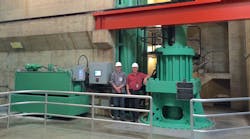Next Steps on Infrastructure
The long-anticipated federal infrastructure bill is making progress in the U.S. Senate. While there still are concerns over the $1 trillion price tag amid a general atmosphere of distrust in Washington, there’s little argument that roads, bridges and other transportation systems need a massive overhaul.
The bill has a number of provisions to address the aging infrastructure, but there are secondary benefits of federal and state funds being pooled to repair the transportation system. There will need to be new investment in manufacturing to deliver the materials and equipment needed for these massive projects and a fresh look at how transportation, supply chains and communications will change in the next two decades.
An infrastructure plan that repairs the existing systems is essential, but it is only a start. A vision of the networks we will need to move forward on such issues as electrification and autonomous driving also must be a part of the planning and execution that comes from this expenditure.
Infrastructure is Dam Important
We think of infrastructure as roads and bridges, but in a world where clean energy generation is important, the value of hydroelectric dams is part of the infrastructure equation.
Hoover Dam generates more than 4 billion kW-hr of electricity each year by taking diverted river water from Lake Mead under extremely high pressure, and channeling it into giant turbines at its base. The water to drive the turbines is fed by gravity through a series of large pipes called penstocks, which narrow from 30 ft to 13 ft as they descend, increasing water pressure to 250 psi.
The overhaul of the dam’s 50-ft-tall pressure-relief valves (PRV) in 2019, as reported by Hydraulics & Pneumatics at the time, was primarily focused on the need to optimize the reliable performance of the older pressure-relief valves. The main objective was to make the PRVs more responsive and functionally efficient when a power line break necessitated a generator shutdown.
The decision was made to go with hydraulic-driven pressure-relief valves which could provide very precise control and extremely fast response. The system would also reduce the number of false pressure relief valve operations that often occurred with the old mechanically operated PRVs.
About the Author
Bob Vavra
Senior Content Director, Power & Motion and Machine Design
Bob Vavra is the Senior Content Director of Power & Motion and its sister publication Machine Design. Vavra has had a long career in publishing, media and events. He has covered all aspects of manufacturing for the past 20 years and is a regular attendee at events such as IMTS and Hannover Messe. Vavra is also a sought-after webcast moderator and event emcee, and has presided over events in the U.S., Germany and China.

Leaders relevant to this article:
